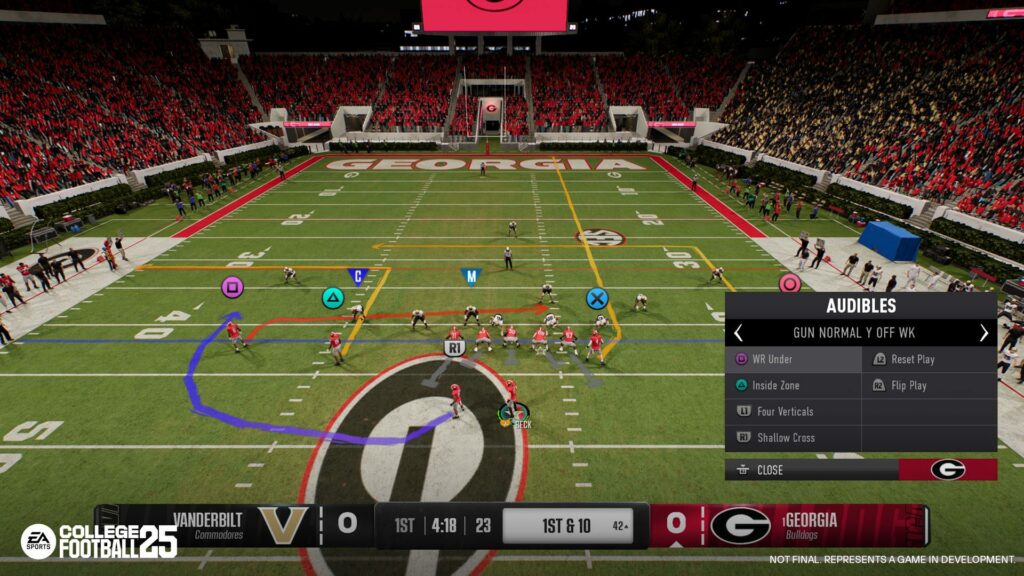In the fast-paced world of college football, having a solid defense is paramount to achieving success. Coaches and players alike understand that a well-structured defense can make or break a season, especially in the competitive landscape of NCAA football. The best college defense playbook NCAA 25 has emerged as a critical resource for teams looking to elevate their defensive strategies, giving them the edge they need to outsmart their opponents. As teams prepare for the upcoming season, exploring the intricacies of these playbooks offers insights into what makes a defense truly formidable.
As the game evolves, so too do the strategies and formations used by defensive teams. The best college defense playbook NCAA 25 features a range of innovative plays that cater to the strengths and weaknesses of various opponents. From zone coverage to man-to-man tactics, these playbooks allow coaches to adapt their game plans based on the unique challenges presented by each matchup. Understanding these defensive strategies is crucial for players aiming to hone their skills and contribute to their team's success on the field.
Moreover, with the increasing emphasis on analytics and performance metrics in college football, the best college defense playbook NCAA 25 incorporates data-driven decisions to enhance defensive performance. Coaches are now relying on advanced statistics to tailor their playbooks, ensuring that their defensive units are not just reactive but proactive in their approach. This article will delve into the key components of these playbooks, examining the strategies, formations, and techniques that define some of the best college defenses in NCAA football.
What Are the Key Components of the Best College Defense Playbook NCAA 25?
Understanding the essential elements of a successful defensive playbook is crucial for coaches and players alike. The best college defense playbook NCAA 25 emphasizes several key components:
- Formations: Varied formations such as 4-3, 3-4, and nickel packages are explored to create mismatches against the offense.
- Coverage Schemes: Zone vs. man coverage strategies are detailed, providing insights on how to effectively defend various passing plays.
- Blitz Packages: The inclusion of aggressive blitz packages designed to disrupt the quarterback and force turnovers.
- Adjustment Techniques: Strategies for making in-game adjustments based on opponent tendencies and game situation.
How Do Teams Implement the Best College Defense Playbook NCAA 25?
Implementing the best college defense playbook NCAA 25 requires a comprehensive approach that involves thorough practice, film study, and effective communication among players. Here’s how teams can successfully implement these strategies:
- Practice Drills: Regularly scheduled practice drills focusing on specific plays and formations to ensure players are familiar with their roles.
- Film Analysis: Studying game footage to identify opponent patterns and tendencies, allowing teams to tailor their defensive game plan accordingly.
- Communication: Establishing a clear communication system on the field to ensure all players are on the same page during plays.
- Feedback Loops: Encouraging constructive feedback among players and coaches to continuously improve execution and decision-making.
What Defensive Strategies Are Most Effective in NCAA Football?
To become a dominant defensive unit in college football, teams must explore various strategies that have proven effective in the NCAA landscape. Some of the most effective strategies include:
- Hybrid Defenses: Combining elements of both 3-4 and 4-3 schemes to create versatility and confusion for the offense.
- Press Coverage: Applying tight coverage at the line of scrimmage to disrupt timing routes and create turnovers.
- Zone Blitzing: Utilizing zone blitz concepts to confuse quarterbacks while maintaining coverage integrity.
- Run Fits: Properly assigning gaps and responsibilities to ensure effective run defense against various offensive schemes.
Who Are the Influential Coaches Behind the Best College Defense Playbook NCAA 25?
Several coaches have made significant contributions to the evolution of defensive strategies in college football. Their innovative ideas and philosophies shape the best college defense playbook NCAA 25. Notable figures include:
- Nick Saban: Known for his multiple defensive schemes and the "Tide" defense at Alabama.
- Kirby Smart: A protégé of Saban who has implemented successful defensive strategies at Georgia.
- Jim Harbaugh: Focuses on physical, hard-nosed defense at Michigan.
- Brent Venables: Renowned for his aggressive and adaptable defensive playbook at Oklahoma.
What Role Does Player Development Play in the Best College Defense Playbook NCAA 25?
Player development is crucial in executing the best college defense playbook NCAA 25. Coaches must focus on the following areas:
- Skill Development: Providing players with the tools to improve their tackling, coverage, and recognition skills.
- Strength and Conditioning: Ensuring players are physically prepared to handle the demands of the game.
- Mental Toughness: Instilling a mindset that emphasizes resilience and adaptability on the field.
- Leadership Roles: Cultivating leadership among players to enhance teamwork and communication.
How Can Teams Stay Ahead of Offensive Trends in NCAA Football?
To remain competitive, defensive units must stay ahead of offensive trends. Here are some strategies to achieve this:
- Continuous Learning: Coaches and players should consistently study new offensive schemes and philosophies.
- Analytical Tools: Utilizing advanced analytics to identify and exploit offensive weaknesses.
- Cross-Training: Encouraging players to learn multiple positions to enhance their understanding of the game.
- Networking: Engaging with other coaches and attending clinics to share and gain insights into successful strategies.
Conclusion: Embracing the Best College Defense Playbook NCAA 25
As college football continues to evolve, the best college defense playbook NCAA 25 remains a vital tool for teams seeking to establish dominance on the defensive side of the ball. By understanding the fundamental components, implementing effective strategies, and prioritizing player development, teams can elevate their defenses to new heights. As we look ahead to the upcoming season, embracing these principles will empower coaches and players alike to navigate the challenges of NCAA football with confidence and skill.



